Derry factory girls' sculpture given council lifeline
- Published
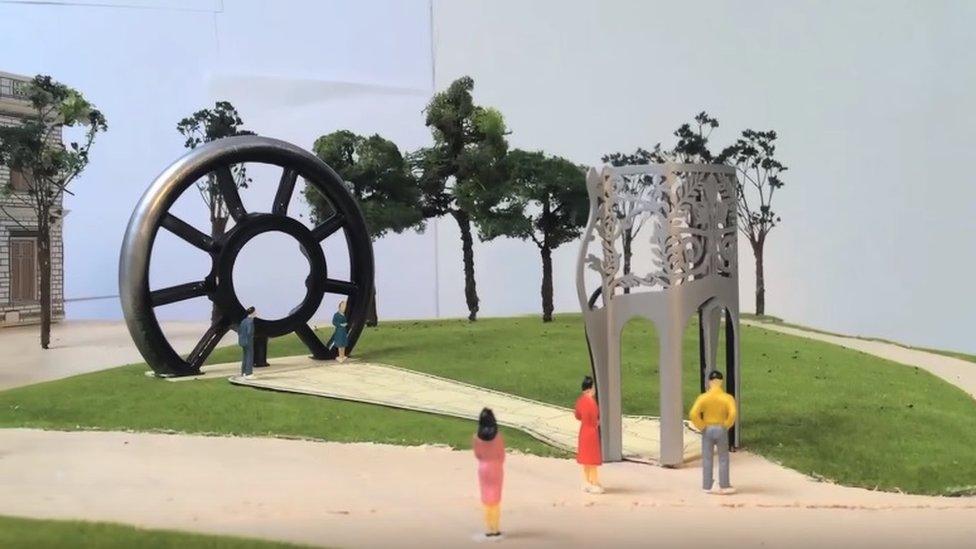
The artwork creates a gateway for pedestrians arriving to the City side from the Peace bridge
Plans to commemorate Londonderry's shirt factory workers with a sculpture have been thrown a lifeline after more than 10 years of red tape.
Planners had recommended that Derry City and Strabane District Council reject the proposal to remember the thousands of women who worked in the city's bygone textile industry.
On Wednesday, councillors rejected that recommendation and backed the artwork.
Artist Louise Walsh said it made for a very happy International Women's day.

Textiles were the 'lifeblood' of the city
"What was fantastic was the sense of people coming together, and it was so fitting that it was International Women's day," said Ms Walsh.
"I know there is expertise in the planning, but there's also expertise in our councillors' experience and there was so much expertise in our factory workers ability to pull the economy through awful times.
"I got phone calls from factory workers yesterday, there were women crying on the phone to me."
Ms Walsh had threatened to walk away from the project because of the planning delays.
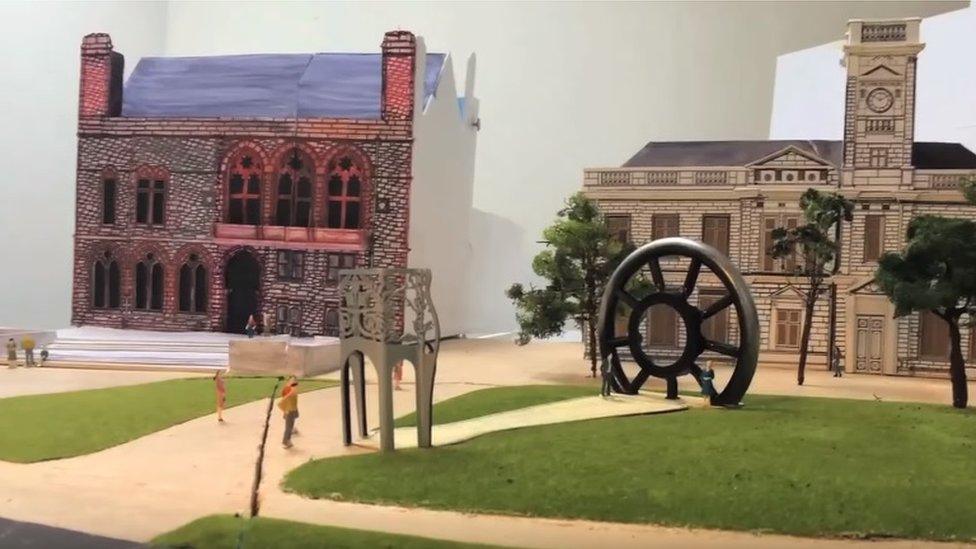
Quotes from the workers will be etched onto the stone flags and archway
Derry once boasted nearly 30 shirt factories, one of which is the now demolished Tille and Henderson's.
The rectangular, red brick-building, located at the end of the Craigavon Bridge, was thought to be the largest shirt factory in the world.
It allowed factory girls to become the working backbone of their families in a city where there were little or no jobs for men.
They were immortalised by the songwriter Phil Coulter in The Town I loved so Well: "In the early morning the shirt factory horn called women from Creggan, the Moor and the Bog."

A mural dedicated to the lives of shirt factory girls
The factory girls' sculpture consists of a large steel wheel and a decorative steel archway to resemble a needle panel.
Stonework would be laid on the ground between the two, depicting the surface of a sewing machine.
The cost of of installing the artwork was last projected to be about £150,000.
"I think it would have been a travesty for the city if we didn't overturn that planners' decision," said Sinn Féin councillor Patricia Logue.
"I am extremely proud to be able to propose that we do overturn it for the recognition that the women of this city has contributed to the makings of this city.
"This has been a long time in the making."
It is understood that the plans will return to council next month, before being put before the Department of Infrastructure.
- Published9 December 2015
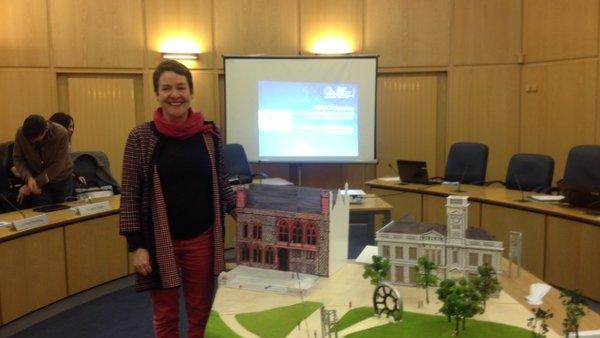
- Published12 February 2015
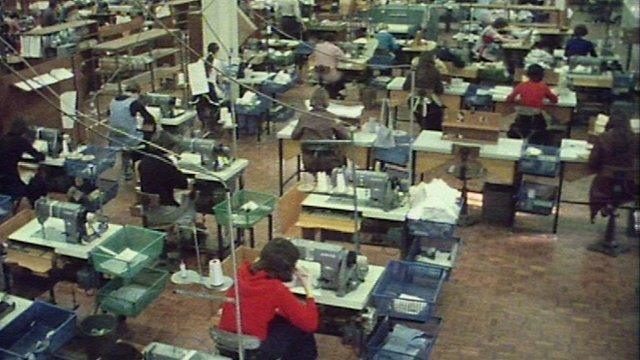
- Published12 January 2012
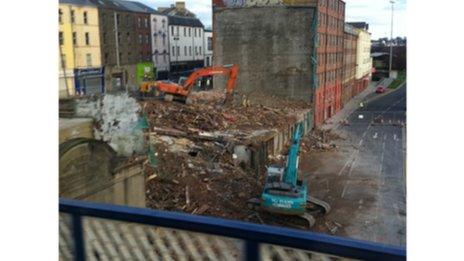
- Published11 January 2012
